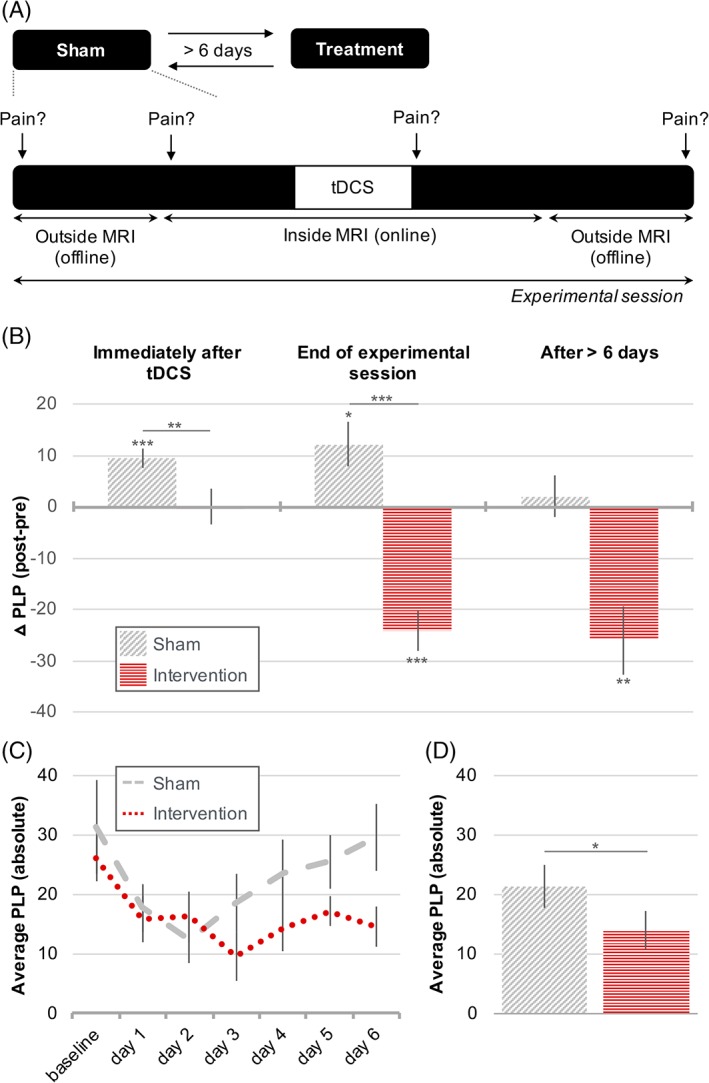Figure 1.

Noninvasive brain stimulation relieves phantom limb pain (PLP) with effects lasting up to 1 week. (A) Experimental timeline. Transient PLP ratings were obtained at 4 different time points within each experimental session. To account for interparticipant variability, post‐stimulation online and offline PLP ratings were contrasted with their respective baselines. To examine longer‐term effects of stimulation, participants were also asked to respond to daily text messages requesting PLP ratings for 6 days post stimulation. (B) Task‐concurrent intervention stimulation effects on PLP, assessed in the experimental sessions. Positive values on the y‐axis indicate PLP increases, and negative values indicate PLP relief. The sham condition is depicted using diagonal shading and the intervention condition using horizontal shading. (B, left) Whereas PLP was increased in the sham condition immediately after stimulation, no PLP increase was observed in the intervention condition, leading to a significant difference between conditions. (B, middle) At the end of the experimental session, PLP remained increased in the sham condition, whereas significant PLP relief was observed after intervention stimulation. The PLP change was significantly different between conditions. (B, right) At least 1 week after stimulation, there was no longer a change in PLP in the sham condition, but significant PLP relief was still observed for the intervention condition. (C, D) A second measure of week‐long noninvasive brain stimulation effects on PLP was obtained using text messages, asking amputees to rate their average PLP on a daily basis. Note that no difference scores were calculated for this measure, and as such, the y‐axis reflects absolute PLP ratings. (C) PLP ratings over the course of 6 days post stimulation. Dashed line = sham stimulation; dotted line = intervention stimulation. (D) The results in C tested as a main effect. In the week after stimulation, PLP was significantly lower in the intervention condition compared to sham. Together, these results show that a single 20‐minute application of task‐concurrent intervention stimulation relieved PLP, with effects lasting up to 1 week post stimulation. Asterisks indicate statistical significance: *corrected p < 0.05, **corrected p < 0.01, ***corrected p < 0.001. Error bars represent the standard error of the mean. MRI = magnetic resonance imaging; tDCS = transcranial direct current stimulation. [Color figure can be viewed at www.annalsofneurology.org]
